#National Geographic Traveler China
Text



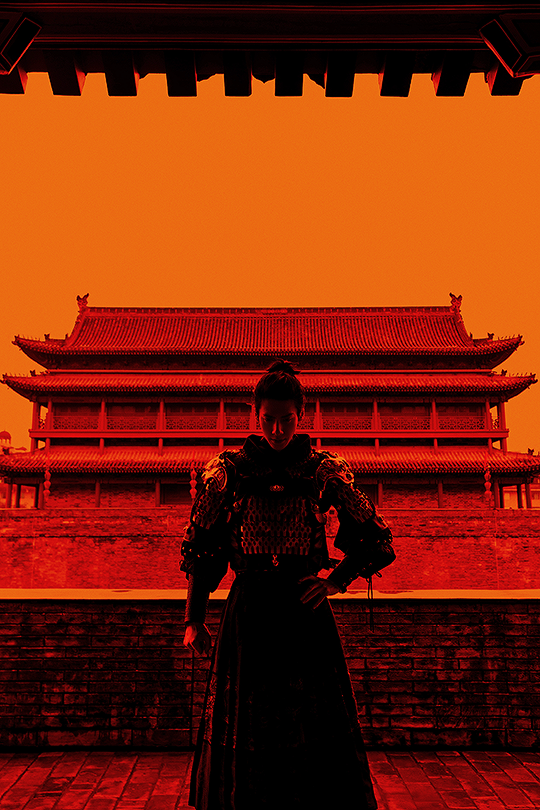

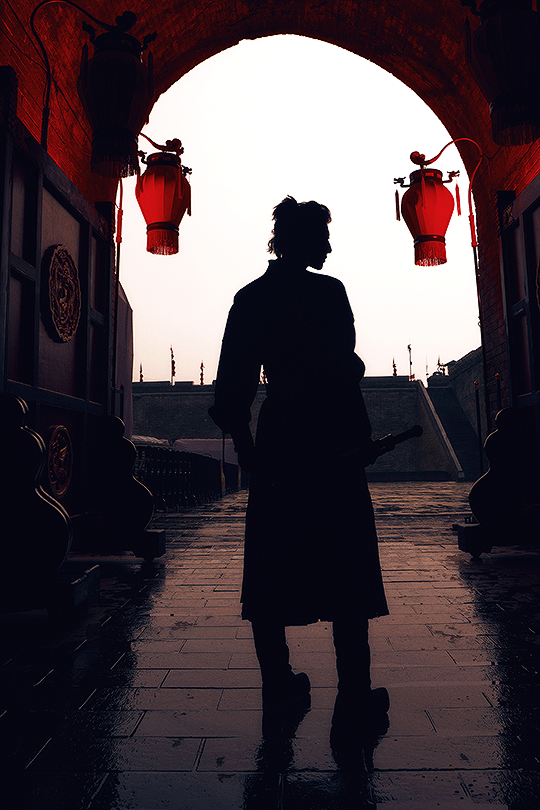
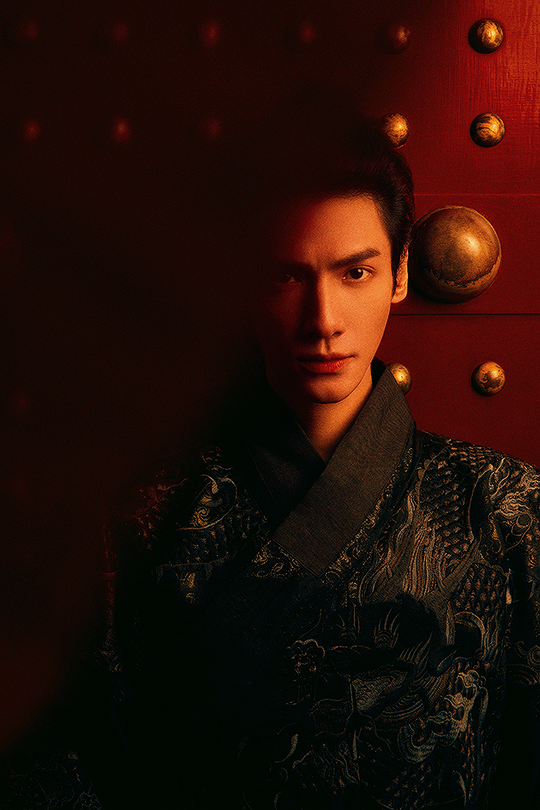


Luo Yunxi
National Geographic Traveler China, Oct. 2023
#luo yunxi#red#leo luo#National Geographic Traveler China#national geographic#cdramaedit#editorial#mocedit#actorsedit#photography#asiancentral#fashion photography#glamoroussource#userbbelcher#chewieblog#flawlessgentlemen#menedit#pocedit#photoshoot#tvactorsdaily#luni#+#*e
716 notes
·
View notes
Text


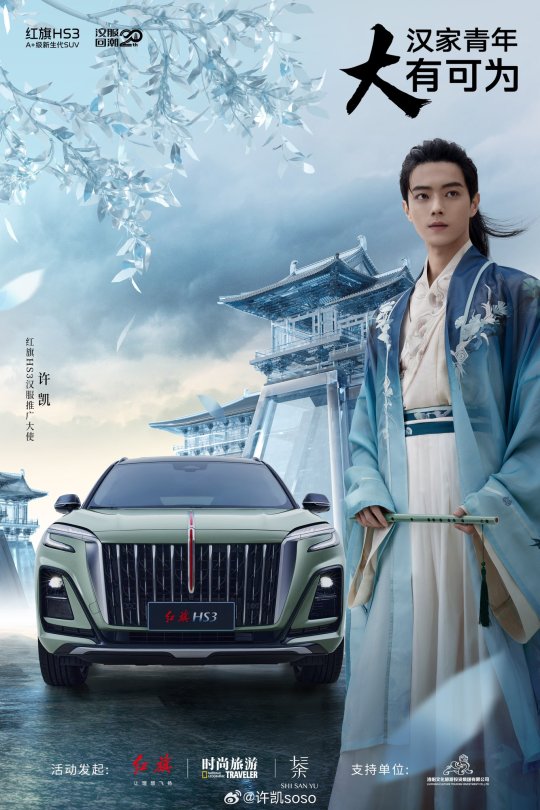

Xu Kai for FAW Hongqi x National Geographic Traveler China x Shi San Yu hanfu
49 notes
·
View notes
Photo

PRIVATE ENTRANCE
Behind the Imperial Garden stands the monumental gateway known as the Gate of Divine Prowess. This auspicious structure led into the emperor’s private quarters at the north end of the Forbidden City.
SHUTTERSTOCK
#shutterstock#photographer#national geographic#culture#architecture#building#imperial garden#gate of divine prowess#china#forbidden city#travel
0 notes
Video
Huangshan : Early spring morning . . . 黃山早春 by Clement Tang
Via Flickr:
This image is included in a gallery "Landscapes" curated by Dave Williams (imageryaspects). Huangshan (Yellow Mountain) is a jagged range of more than 70 knifelike peaks in eastern China’s Anhui province. The region's low-hanging clouds, distinctively shaped granite rocks and twisted pine trees have been subjects of numerous classical paintings and poems. Cable cars provide access to several peaks, and steep paved trails with thousands of stone steps snake past many of the range's famous viewpoints. It is a UNESCO World Heritage Site, and one of China's major tourist destinations. This is a hand-held HDR image taken near Yungu Ropeway on a gloomy spring morning. There is still ice on the cliff face. The whole area is very picturesque - like scenes in a classical Chinese painting. In addition, the pale yellow-orange colour in the distant sky is surrealistically beautiful. 黃山位於中國安徽省南部黃山市境內。黃山古稱黟山,南北長約40千米,東西寬約30千米。黃山素以「奇松、怪石、雲海、溫泉」四絕聞名天下。那72峰、24溪、2湖、3瀑,峰峰奇特,溪溪曲折、極盡天下山水之美,更聚名山大川之勝。黃山最高峰是蓮花峰,海拔1860米 ,位 於黃山中部、站在玉屏樓向前望去, 猶如一朵含苞初放的蓮花, 峻峭高聳, 仰天怒放。晴天從蓮花峰頂可遙見江西的廬山和似帶的長江。黃山三大主峰之一的天都峰,與蓮花峰爭雄對峙。它位於黃山東南部,人稱無上之都會, 海拔1829米、從玉屏樓至天都峰約15千米,其間有黃山最險峻的峰嶺,峰上的石樓,坡度都在70度以上;尤以中途的鯽魚背最險。 此圖攝於雲谷索道站附近, 請問有人知道景點名稱是甚麽? (Explored: Jul 15, 2022 #32)
#Huangshan#黃山早春#Spring morning#yellow sky#Travel#Anhui Province#China#Nature#National Geographic#Geological feature#geo tagged#CPL filter#hand held HDR#UNESCO World Heritage Site#Natural Heritage#中國安徽省#黃山市#near Yungu Ropeway#pine tree#rocky mountains#monolithic cliffs#Yellow Mountain#surrealistic#Scenics#not justlandscapes!#Landscape#closetonature#Concordians#ice on cliff#攝於雲谷索道站附近
1 note
·
View note
Photo

“Chengtu Rapid Transit; The Interpreter Essays The Wheelbarrow On A Journey Into The Szechan Alps,” photographed by Rollin T. Chamberlain. Page 67 from Gilbert H. Grosvenor, SCENES FROM EVERY LAND: Picturing the People, Natural Phenomena and Animal Life of all Parts of the World. Third Series Grosvenor, Published by National Geographic Society, Washington, 1912.
#chengdu#sichuan#wheelbarrow#interpreter#travel photography#photojournalism#national geographic#republic of china#chinese history
0 notes
Text
Look at his hair!

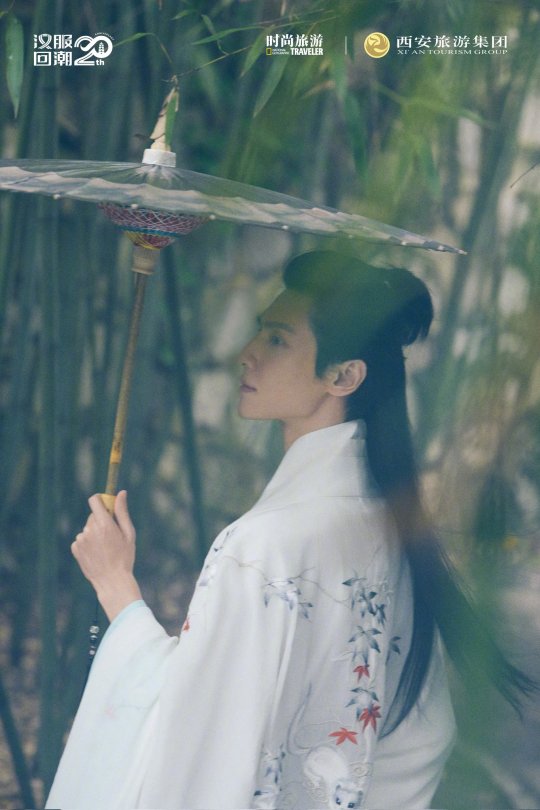
In this recent National Geographic Traveler China October cover, "Hanfu Resurgence in 20 Years”-ambassador Luo Yunxi does not only show off his beauty and elegance, but also his natural hair line! Why I'm so excited about this, you might wonder?
Wigs in Chinese costume dramas, especially for male actors, are often lacking. The edges are too hard and look unrealistic. For actresses, the long hair and ornaments are woven into their natural hair, which gives a better look.
Seeing Luo Yunxi grow out his hair and using extensions therefore does not only look great, it makes me look forward to his next costume drama, which is rumored to start shooting around next month! He is lucky to have such a perfect hair line!


62 notes
·
View notes
Text
i feel like i'm starting to sound like a broken record with the amount of times i keep repeating rEaD oRv, so here's my mini list of unrelated book recommendations that will nevertheless rewire your brain and make you feel undescribed emotions, and i think more people should read them:
The Left Hand of Darkness by Ursula K. Le Guin - Timeless scifi classic about an androgynous/sexless/genderless human society. Really interesting thought experiment about humanity, society, colonialism, and the nature of love itself. The worldbuilding is very well thought out and ends up recontextualising what the reader initially thinks about the Earth vs this world.
Solaris by Stanisław Lem - What if you were send to an alien planet covered by an inhospitable ocean and the space station's remaining occupants are slowly descending into madness for some unknown reason and one of them is missing and there is someone that shouldn't be there and you are visited by your dead wife who isn't dead but who also isn't your wife. And the alien ocean was sentient.
Little Mushroom by Yi Shi Si Zhou - Post-apocalyptic adventure novel set on an Earth destroyed by radiation and mutated lifeforms after the magnetic field mysteriously disappeared. We follow a mutated mushroom who takes on the form of a human to infiltrate one of the last bastions of humanity, and has to face what it means to fit in to society (and fall in love with a human whose job is to kill him). The best and most distressing part about this book is that it straight-up chronicles the very last moments of the human race, until you can't imagine how it could possibly have a happy ending for anyone (but it does. to an extent)
The City & the City by China Miéville - Murder mystery/police procedural set in a surreal city-state that occupies the same geographical location as another country, where the national borders are not physical but psychological, and to travel to the other country you have to go through the usual passport and customs checks etc, even if you were currently standing in a road that was also in the country. The mystery then goes beyond the borders and the truth about these two cities appears more sinister than it appears.
The Dream of a Ridiculous Man by Fyodor Dostoevsky - What if you were a bitter man who hated the world and you were about to kill yourself but then you took a nap and dreamt of a world with no evil that taught you pure unbridled goodness until you taught them evil and irreversibly corrupted them. And then you woke up. What then.
130 notes
·
View notes
Text
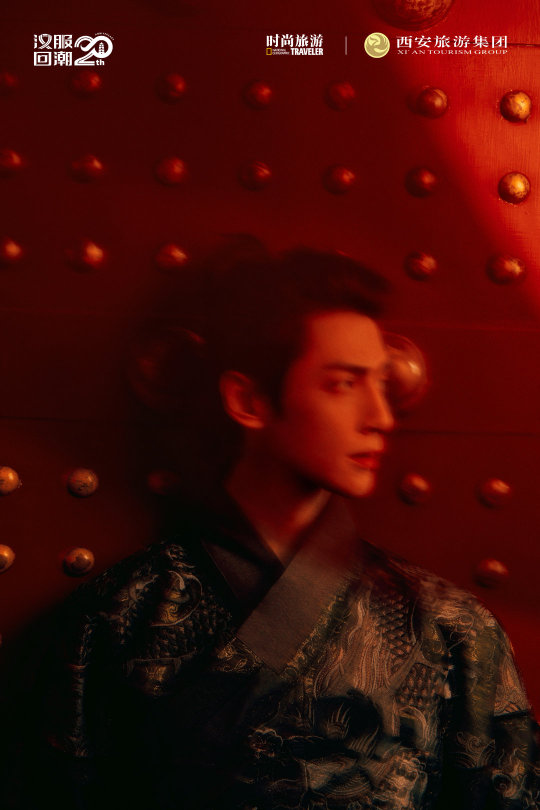
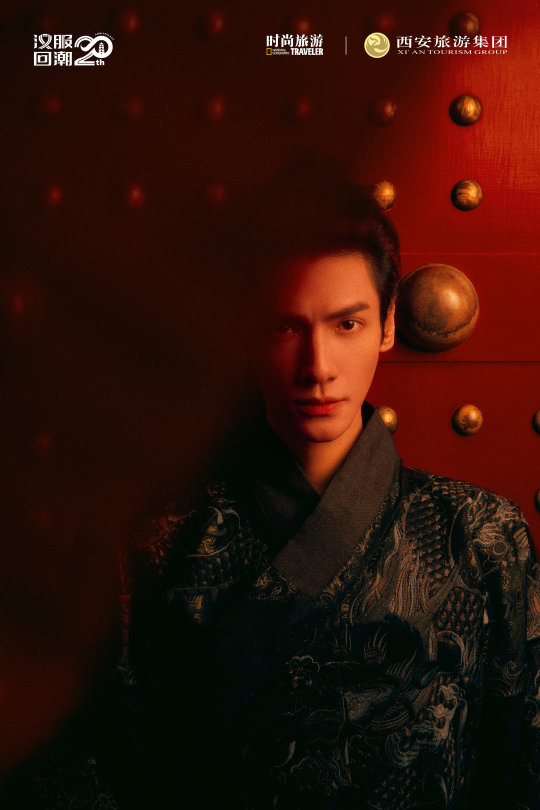

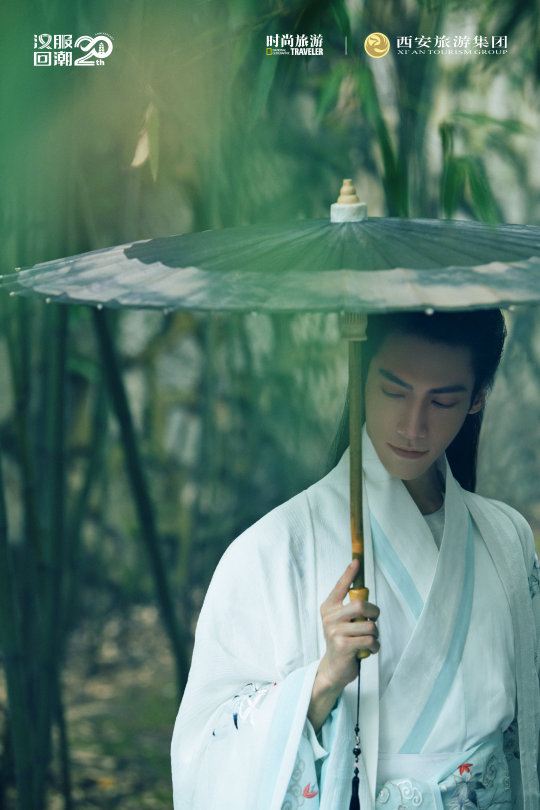
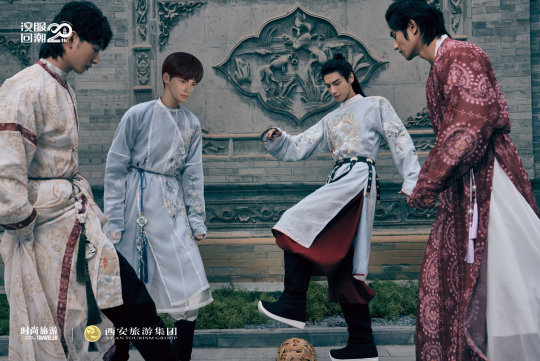



Luó Yúnxi 羅雲熙
National Geographic Traveller China - October 2023 (2/2)
#luo yunxi#national geographic#chinese actors#till the end of the moon#light chaser rescue#ashes of love#princess silver#immortality#love is sweet#cdrama
23 notes
·
View notes
Text
Luo Yunxi 2023 journey thread
Till The End of The Moon:
Influential Work of the Year (Weibo)
Annual Outstanding Works (第六届初心榜)
Popular Drama Series (Baidu)
Fastest series to reach 10,000 heat (Youku)
Most popular web drama (Maoyan)
33.2% market share TOP 1 new high for xianxia dramas (Yunhe)
April TOP1 Drama Series (Lighthouse)
Web drama TOP1 (Youku 2022-present)
Daily average playback volume across all terminals (Kuyun)
Dominated top lists (Weibo, Douyin, Kuaishou, Guduo, Datawin, Aiman)
April Most popular character - Tantai Jin/ Mingye/ Cang Jiumin
2023 most popular ancient costume drama (Maoyan)
Top character index for 4 weeks in a row (Weibo)
Top drama character spot for 5 consecutive weeks (Aiman)
Love is Panacea:
Highest CVB ratings exceeded 1.2%, episode average exceeded 1%
Kuyun ratings peaked at 1.5%
Average viewership rating NO.1×19 after prime time
Maoyan Emotional drama popularity champion
Upcoming works:
Jiang Xinbai : Follow Your Heart
Tang Lici : Shui Long Yin
Chu Wanning/ Chu Xun / Qin Dai Zhao : Immortality
Music:
Traveler -special birthday song Top 49 hs, 1167.5W+ Weibo topic reads
Business:
Shiseido: skin care spokesperson
Cogi: sunscreen spokesperson
League of Legends: Guofeng spokesperson
Ziyuan: Brand spokesperson
浮生忆玲珑手游 (game) spokesperson
Zhenguoli brand spokesperson
Asian Games Guest Group (China Mobile / Migu)
Cultural promotion ambassador of “Hanfu Resurgence in 20 Years”
China-Thailand Cultural Friendship Ambassador (One of the best moments in my lifetime CRYING)
Fashion:
January: L’OFFICIEL
March: OK magazine
Till The End of The Moon x Harper's Bazaar
October:
Dream Collection Chinese Style Album - Harper’s Bazaar
National Geographic Traveler
MiniBazaar
Activity:
January : Audiovisual Annual Ceremony
April: Till The End of The Moon event, sweep the building
May: Shiseido live
June: Cetaphil x Cogi live
July: Double Madame Tussauds wax figures (Shanghai and Beijing)
August : League of Legends 12th Anniversary Star exhibition game
October: Douyin Wonderful night 桃花諾
November:
Special Live Show / fanmeet (China-Thailand Cultural Friendship Ambassador)
Douyin Shining Night/Dragon TV: Traveler
Tmall Double 11/ Hunan TV: Let’s be together for 10,000 years
Mango Investment meeting
November: League of Legends S13 finals
December: Shiseido offline meeting and live broadcast
Public welfare activities
Thank you for the great year Xixi! Let’s continue the journey together on 2024!
#罗云熙#luo yunxi#till the end of the moon#长月烬明#颜心记#follow your heart#治愈系恋人#love is panacea#shui long yin#水龙吟
12 notes
·
View notes
Note
no need to reply to or share this but here's a comment from reddit explaining why sumeru is based on multiple countries and the link to the original comment. hope it helps you understand better but you are free to keep your feelings on the matter, i get it
https://www.reddit.com/r/Genshin_Impact_Leaks/comments/v7omfz/new_informatiom_and_update_about_sumeru/ibm346e?utm_medium=android_app&utm_source=share&context=3
"Sumeru draws from Chinese cultural tropes of the Near West (i.e. the Middle East) and the Buddhist world of South and South East Asia.
The name Sumeru (須彌 in Chinese) comes from a mythical, sacred mountain within Buddhist and other South Asian religious traditions. For China, India was the birthplace of Buddhism, existing in the Chinese consciousness as the true source of received religious knowledge and tradition. However, given the geographical impediments to travel between China and India (the Himalayas), India was often treated in Chinese literature as an almost mythical region in itself. One of the best representations of this is found in the classic work, Journey to the West (西遊記), in which a Buddhist monk travels to India to find "true" scriptures.
Much of South East Asia (minus Vietnam, which was historically more in the Chinese cultural orbit) shares in South Asia's Buddhist/Hindu traditions through common religions (Therevada Buddhism in Burma/Myanmar, Cambodia, Thailand and Laos and Hinduism in parts of Indonesia) as well as through [linguistic](https://sibresearch.org/uploads/2/7/9/9/2799227/riber_s15-240_158-165.pdf), [architectural](https://upload.wikimedia.org/wikipedia/commons/thumb/4/44/Ankor_Wat_temple.jpg/1200px-Ankor_Wat_temple.jpg) and [cultural influences](https://en.wikipedia.org/wiki/Ramakien).
While the Middle East on the other hand does not share these same cultural connections it does exist, along with India, as part of the traditional Chinese conception of the Near West. This is to say an exoticized land of caravans, genies, spices (remember the last event being titled "Spices from the West") and hidden knowledge.
Just as Mondstadt draws from a Chinese cultural understanding of late Medieval Europe, Sumeru is based not any single region but on the historic Chinese conception of the lands to their immediate south and west. While you can certainly make an argument that this understanding is based in large part on broad misconceptions and misunderstandings (just like how Europeans created their own exoticized forms of China and other eastern Asian nations), I think it's still worth noting that this isn't just some random grab-bag of countries thrown together but rather comes from a cultural tradition with long roots in the Chinese-speaking world."
mm i see i see
while that explains the "smash" of all the country, mhy should have predicted people complaining about it.
genshin is an international game, not everyone knows about this
people from said regions are going to be affected and back to point 1 are maybe not going to know about this
while it explains it, it still doesn't excuse it. people were still affected by it and some view it as offensive
again mhy is a chinese compagnie but when you use inspirations from another culture than yours, the minimum is to actually do research and respect the culture you take inspiration from and not limit yourself to what you know already (in that case the traditional view they have)
164 notes
·
View notes
Text
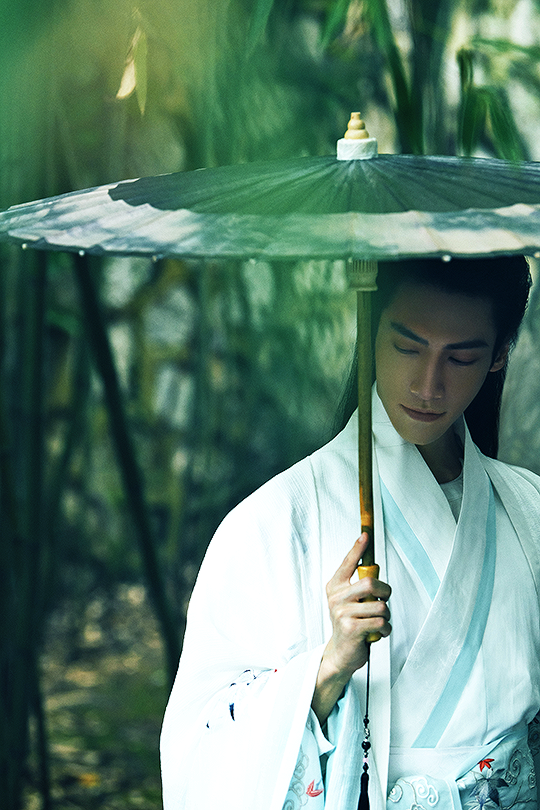

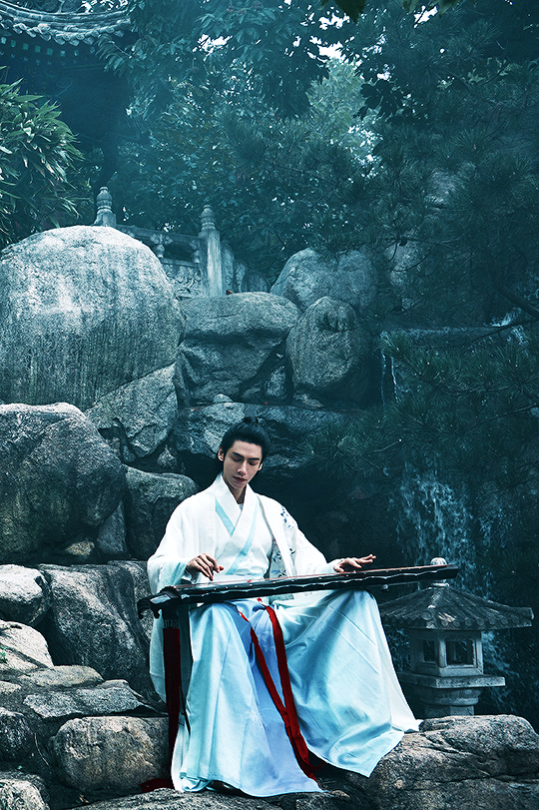
Luo Yunxi
National Geographic Traveler China, Oct. 2023
#luo yunxi#leo luo#nature#National Geographic Traveler China#national geographic#cdramaedit#editorial#mocedit#actorsedit#photography#asiancentral#fashion photography#glamoroussource#userbbelcher#chewieblog#flawlessgentlemen#menedit#pocedit#photoshoot#tvactorsdaily#luni#+#*e
296 notes
·
View notes
Text




Luo Yizhou takes the cover of National Geographic Traveler China
0 notes
Photo
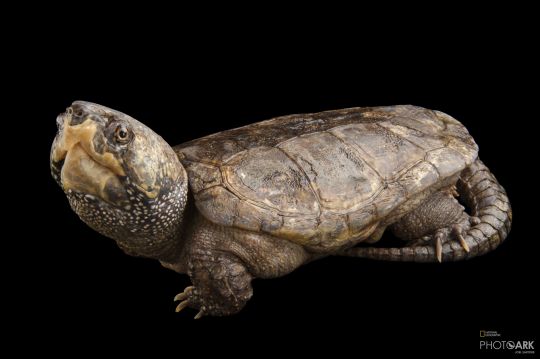
Animals of the Photo Ark - Big-Headed Turtle (Platysternon megacephalum)
Family: Big-Headed Turtle Family (Platysternidae)
IUCN Conservation Status: Critically Endangered
The only member of a unique family of turtles that diverged from other turtles some 75 million years ago, the Big-Headed Turtle gets its name from its extremely large head, which makes it easily identifiable. Its head is so large, in fact, that it is unable to retract it into its shell when threatened, although it is still capable of defending itself via a painful bite delivered with its powerful beaked jaws. Native to China, Laos, Cambodia, Myanmar, Thailand and Viet Nam, it requires a very specific habitat consisting of clear, cascading streams in high-altitude forests in order to thrive, and as such was rarely spotted even before human action resulted in declines in global populations. Despite its aquatic habitat it is noted to be a fairly weak swimmer, but it compensates for this with its ability to cling tightly to submerged rocks and crawl across them to travel throughout its home streams. Big-Headed Turtles feed on aquatic insects, mollusks and freshwater crabs as well as fruit and other forms of plant matter, relying on their large, powerful jaws to break through the hard shells of their prey. Little is known about their life cycle, but it is believed that they breed annually, produce 2-8 eggs per clutch, and can live for around 50 years. Big-Headed Turtles currently face a considerable risk of extinction, with exploitation by humans (both for their meat and shells, and to be captured live and taken into the pet trade) and the destruction of their unusual stream habitats due to urban expansion being the greatest threats to the species.
---------------------------------------------------------------------------
The photo above is from the National Geographic Photo Ark, and was taken by Joel Sartore. To see more of Sartore’s amazing work and support the Photo Ark, follow the link below:
https://www.nationalgeographic.org/projects/photo-ark/?locale=en
#big-headed turtle#turtle#turtles#testudines#reptile#reptiles#herpetofauna#zoology#biology#Herpetology#Critically Endangered#animal#animals#wildlife#joel sartore#photo ark
24 notes
·
View notes
Text
From The Waterbury Observer page on Facebook:
A decade-long DNA project by National Geographic collected DNA samples from individuals in the jungles of Papau New Guinea, the rolling hills of Tuscany, Brazil, Siberia, China, Ireland, Kenya, Puerto Rico, Iceland, Albania, and every nook and cranny on the planet.
It was the largest and most intensive DNA project ever conducted on the planet and resulted in a startling discovery; every living person on Earth is a direct descendant of one woman who lived in East Africa 150,000 years ago. They named her Mitochondrial Eve.
She was a nomad and after many many generations her descendants began to migrate out of Africa and eventually physically adapted to populate every viable ecosystem in the world. The further north her descendants traveled - and after hundreds of generations - their skin and hair lightened. This is known as natural selection, a biological process where a living organism will morph and change to adapt to its environment.
The Observer has shared this information with dozens of our friends and family over the years, and while most are surprised and delighted, for some this scientific discovery is not well received.
"We all come from an East African nomad?" they ask shaking their head.
"Yes."
"And she was black?"
"Yes."
"Well I don't believe that," they'll say.
And in today's world divided by faith and culture and politics and skin color, it is a hard concept to fully embrace - but we are all related - blacks, whites, Asians and Hispanics.
We all come from that one mother in East Africa 150,000 years ago. She may be the biblical Eve, or she may have evolved from primates and Neanderthals. It really doesn't matter if you embrace her in faith, or in science, but by accepting her and learning about human history and how we have adapted in the past 7000 generations we might begin to realize that we literally are one human family. And in that realization we might begin the slow and painful process of reconciliation and learn to accept and embrace our physical differences.
So today, on Mother's Day we salute our mothers, our grandmothers, our great grandmothers, and all the mothers on the path that lead straight back to Mitochondrial Eve, who started our astoundingly diverse family 150,000 years ago.
Happy Mothers Day
My add-on.....
Isn't it interesting that Christianity states we came from Adam, including Eve when the opposite is actually true. Just like they say God is male when it is the female sex that births life. And the mother, maiden, and crone became god, the son, and the holy ghost. Let's also add turning Yule into Christmas and the rebirth of spring to Easter-the rebirth of Christ. Did they do anything original?
#patriarchy#radical feminism#divine female#anti patriarchy#mother nature#radfem#womensrights#womenempowerment#radical feminist#mitochondrial eve#women power#matriarchy#spirituality#anti religion#religion#christianity
3 notes
·
View notes
Photo
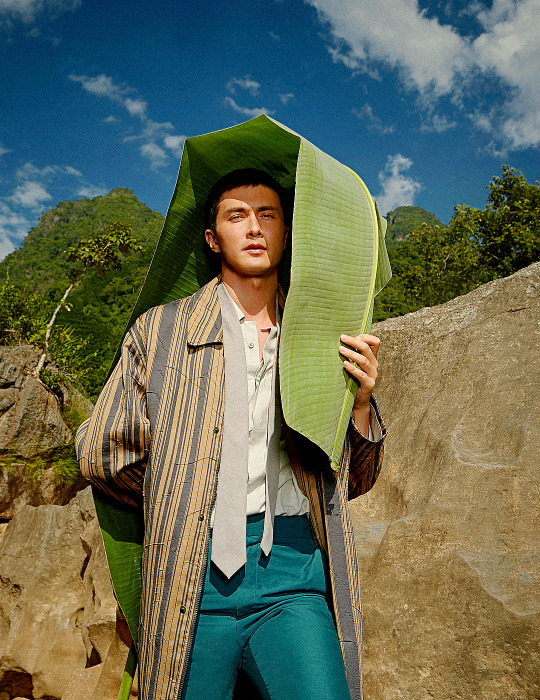


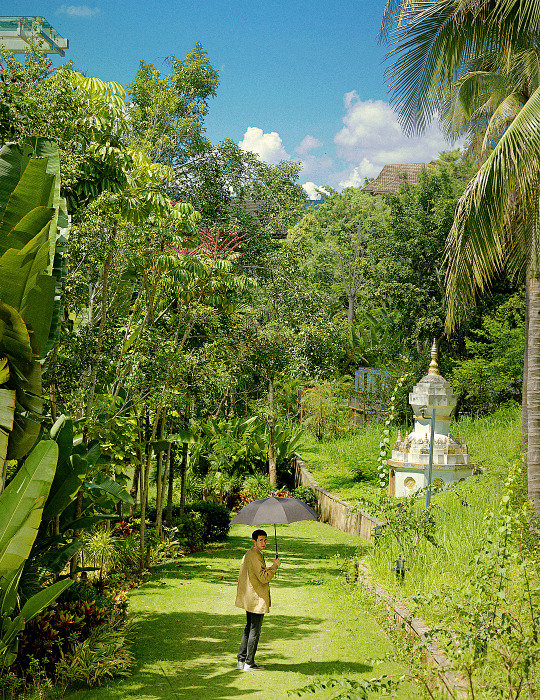
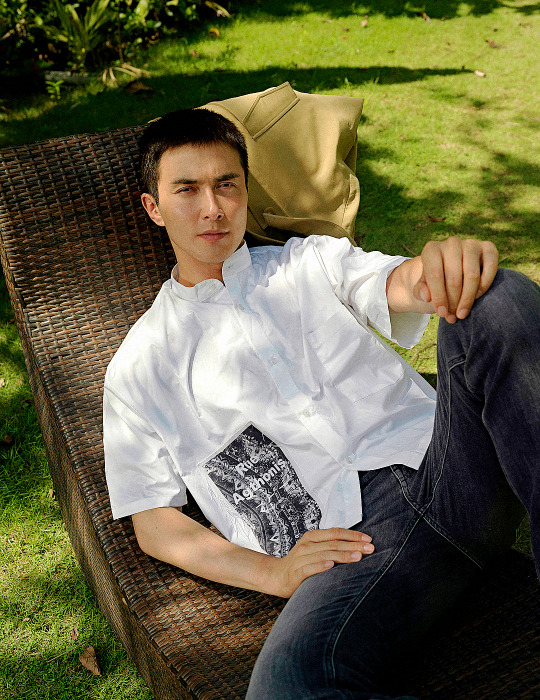



VENGO GAO WEIGUANG photographed by Hai Zhen for National Geographic Traveler China | November 2021
2 notes
·
View notes
Text
youtube
Sorry, I can't find a English video about this subject
Albert Kahn banker, his gardens of the world and the archives of the planet
In 1896, Albert Kahn undertook a trip to Japan during which he met the former Japanese ambassador to France, Baron Motono Ichirō, and met Count Ōkuma Shigenobu, who was twice a minister. Received at the University of Tokyo, he knows the great honor of being rewarded with a personal gift from the Emperor, three gold cups (decorated with boats?, "Kahn" meaning "boat in German) corresponding to a coat of arms. It was after this trip that Albert Kahn began the development of the Japanese garden of his property.
In 1898, his first patronage consisted of travel grants "Around the World" through the Albert Kahn Foundation: a discovery of other countries of more than a year offered to young men and women associates, to allow them to enrich their skills and their future teaching by direct knowledge of the world.9. From 1907, he extended this liberality to young graduates from Japan, Germany, the United Kingdom, the United States, Russia.9. Frequent meetings of the beneficiaries take place at his property in Boulogne, at the circle Around the World. Other patronages will follow as long as Albert Kahn has the financial means.
The Archives of the Planet
On November 13, 1908, Albert Kahn left for many months for Japan and China, via the United States, and had his mechanic-driver, engineer by training, Alfred Dutertre, take more than 4000 stereoscopic shots and cinematographic images that testify to his "trip around the world".4 ». A few months after his return, he left for two months in South America in 1909 where he visited Uruguay, Argentina, and Brazil, probably with a first professional photographer recruited for his image collection project, Auguste Léon, who took like Dutertre black and white stereoscopic plates, but also experimented with the autochrome plate 9 × 12 cm . Other professional operators are then recruited and sent around the world and to France to photograph on autochrome plate (color) and film (movement) to testify "aspects, practices and modes of human activity, whose fatal disappearance is only a matter of time". The most prolific and adventurous are Stéphane Passet, Frédéric Gadmer, Lucien Le Saint, Paul Castelnau, Roger Dumas, etc. From 1912, the team was supervised by the geographer Jean Brunhes, who participated in certain missions. Between 1909 and 1931, some 72,000 autochromes and a hundred hours of film were brought back from some sixty countries.4. Many guests of Albert Kahn's gardens are also taken in portrait on autochrome plate (and these images are the only ones in color of many personalities of the interwar period) and filmed. The Archives of the Planet are the iconographic side of a vast documentation project that will take other forms (publications, documentation centers, etc.) and whose goal is a better knowledge of other nations for a better understanding, in order to prevent deadly conflicts. The images are also projected for this purpose to Albert Kahn's guests, often prestigious, from all over the world, as well as in higher education structures.
source : https://fr.wikipedia.org/wiki/Albert_Kahn_(banker)
***
Albert Kahn banquier, ses jardins du monde et les archives de la planète
Les Archives de la Planète
Le 13 novembre 1908, Albert Kahn part de longs mois pour le Japon et la Chine, via les États-Unis, et fait prendre par son mécanicien-chauffeur, ingénieur de formation, Alfred Dutertre, plus de 4000 clichés stéréoscopiques et images cinématographiques qui témoignent de son « voyage autour du monde4 ». Quelques mois après son retour, il repart pour deux mois en Amérique du Sud en 1909 où il visite l'Uruguay, l'Argentine, et le Brésil, sans doute avec un premier photographe professionnel recruté pour son projet de collection d'images, Auguste Léon, qui prend comme Dutertre des plaques stéréoscopiques noir et blanc, mais expérimente aussi la plaque autochrome 9 × 12 cm. D'autres opérateurs professionnels sont ensuite recrutés et envoyés dans le monde et en France afin de photographier sur plaque autochrome (la couleur) et de filmer (le mouvement) pour témoigner « des aspects, des pratiques et des modes de l'activité humaine, dont la disparition fatale n'est plus qu'une question de temps ». Les plus prolifiques et aventuriers sont Stéphane Passet, Frédéric Gadmer, Lucien Le Saint, Paul Castelnau, Roger Dumas, etc. À partir de 1912, l'équipe est encadrée par le géographe Jean Brunhes, qui participe à certaines missions. Entre 1909 et 1931, ce sont ainsi quelque 72 000 autochromes et une centaine d'heures de film qui seront rapportés d'une soixantaine de pays4. De nombreux invités des jardins d'Albert Kahn sont aussi pris en portrait sur plaque autochrome (et ces images sont les seules en couleur de très nombreuses personnalités de l'entre-deux-guerres) et filmées. Les Archives de la Planète sont le versant iconographique d'un vaste projet de documentation qui prendra d'autres formes (publications, centres de documentation, etc.) et dont le but est une meilleure connaissance des autres nations pour une meilleure entente, afin de prévenir des conflits meurtriers. Les images sont d'ailleurs projetées à cette fin aux invités, souvent prestigieux, d'Albert Kahn, venant du monde entier, ainsi que dans des structures d'enseignement supérieur.
source : https://fr.wikipedia.org/wiki/Albert_Kahn_(banquier)
2 notes
·
View notes